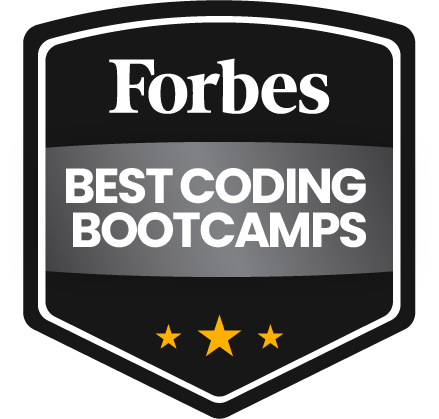TL; DR
- Medical coding is challenging but learnable
Complex terminology and coding systems require effort, but practice makes it manageable - Key skills for success
Master anatomy, ICD-10, CPT codes, and attention to detail - Certification takes 4–12 months
Programs vary, but consistent study leads to credentials like CPC or CCS - Practice and resources are key
Use online courses, coding tools, and communities to build confidence
What Is Medical Coding
Medical coding involves converting healthcare diagnoses, procedures, and services into standardized alphanumeric codes used for billing, insurance claims, and data analysis. Coders use systems like
- ICD-10-CM
For diagnoses (e.g., coding a broken arm as S42.301A) - CPT
For procedures (e.g., coding a surgery as 29881 for knee arthroscopy) - HCPCS Level II
For supplies and non-physician services (e.g., J3301 for a drug injection)
Coders work in hospitals, clinics, or remotely, ensuring accurate billing and compliance with regulations. In 2025, the U.S. Bureau of Labor Statistics projects a 7% job growth for medical coders, with median salaries around $48,000-$60,000 annually. For beginners, learning these systems feels daunting, but structured training and practice make it accessible.
What Medical Coding Involves
Medical coding involves the process of assigning codes to diagnoses and procedures to facilitate patient data analysis, billing, and insurance claims. It requires a thorough understanding of medical terminology, anatomy, and the healthcare delivery system. Medical coders must be meticulous in their work, as accurate coding directly impacts healthcare reimbursement and statistical data quality.
Common Coding Systems (ICD-10, CPT, HCPCS)
There are several key coding systems used in medical coding, including ICD-10 (International Classification of Diseases, 10th Revision), CPT (Current Procedural Terminology), and HCPCS (Healthcare Common Procedure Coding System).
- ICD-10 is used for coding diagnoses and is crucial for understanding patient conditions and healthcare trends.
- CPT codes are used to describe medical procedures and services, playing a vital role in billing and reimbursement.
- HCPCS codes cover a broader range of services, including equipment and supplies not covered by CPT.
Is Medical Coding Hard? Challenges for New Learners
Medical Coding can definitely be challenging. Embarking on a career in medical coding can be daunting, with numerous challenges awaiting new learners. The field of medical coding is complex and demanding, requiring a strong foundation in various aspects of medical knowledge and coding systems.
1. The Learning Curve: Medical Terminology and Anatomy
One of the primary challenges new learners face is mastering medical terminology and anatomy. Medical coding involves understanding a vast array of medical terms, procedures, and diagnoses, which can be overwhelming. New coders must become familiar with the human body’s structure and functions, as well as the terminology used to describe various conditions and treatments.
To overcome this challenge, learners can benefit from structured educational programs that focus on medical terminology and anatomy. Interactive learning tools, such as online courses and anatomical diagrams, can also aid in understanding complex medical concepts.
2. Technical Requirements and Attention to Detail
Medical coding requires a high level of technical skill and attention to detail. Coders must be proficient in various coding systems, including ICD-10, CPT, and HCPCS. They must also be able to accurately apply coding guidelines and regulations, which can be intricate and subject to change.
To succeed, new learners should develop strong analytical skills and attention to detail. They can achieve this through practice and by using coding software and tools that simulate real-world coding scenarios.
3. Certification Process and Continuing Education
Obtaining medical coding certification is a significant step in a coder’s career. The certification process typically involves passing an exam administered by a professional organization, such as the American Academy of Professional Coders (AAPC) or the American Health Information Management Association (AHIMA).
To prepare for certification, learners can engage in continuing education programs and coding workshops. Staying updated with the latest coding guidelines, regulations, and best practices is crucial for career advancement and success in medical coding.
Challenges and How to Overcome Them
Getting started in medical coding involves structured learning and hands-on practice. Here’s how to begin in 2025:
- Choose a Training Program
Enroll in a reputable program from AAPC (Certified Professional Coder, CPC) or AHIMA (Certified Coding Specialist, CCS).- Duration 4–12 months, depending on full-time or part-time study
- Cost $1,500-$3,000 for online courses; community colleges may be cheaper
- Examples AAPC’s CPC course, MedCerts, or Coursera’s medical coding basics
- Study Medical Terminology
Learn anatomy, physiology, and medical terms. Use apps like Medical Terminology by Elsevier or free resources like Quizlet - Practice Coding Scenarios
Simulate real-world coding with practice exams or software like EncoderPro. For example, code a patient’s knee surgery using CPT 27447 and ICD-10 M17.11 - Get Certified
Pass exams like CPC ($399) or CCS ($299-$399). Certification boosts employability and salaries (CPC holders earn 20% more on average) - Build a Portfolio
Document practice cases or projects in a portfolio. Share it on LinkedIn or GitHub to showcase your skills
FAQ
What is medical coding?
Medical coding is the process of assigning codes to diagnoses and procedures in the healthcare industry.
What does a medical coder do?
A medical coder, also known as a coding specialist, reviews patient data and assigns these codes using various coding systems, such as ICD-10, CPT, and HCPCS, to facilitate billing, insurance claims, and statistical analysis.
What are the most common coding systems used in medical coding?
The most commonly used coding systems in medical coding are ICD-10 (International Classification of Diseases, 10th Revision), CPT (Current Procedural Terminology), and HCPCS (Healthcare Common Procedure Coding System). ICD-10 is used for coding diagnoses, while CPT and HCPCS are used for coding procedures and services.
Is medical coding certification necessary for a career in medical coding?
While certification is not always mandatory, it is highly recommended for a career in medical coding. Certifications like CPC (Certified Professional Coder) or CCS (Certified Coding Specialist) demonstrate a level of expertise and commitment to the profession, making certified coders more attractive to potential employers.
How long does it take to become a certified medical coder?
The time it takes to become a certified medical coder varies depending on prior education, experience, and the certification program chosen. Typically, it can take several months to a year or more to complete the necessary training and preparation for certification.
What are the continuing education requirements for medical coders?
Medical coders are required to complete continuing education requirements to maintain their certifications. The specific requirements vary depending on the certification and the certifying organization, but they often involve completing a certain number of hours of training or education within a specified timeframe.
Can I work as a medical coder remotely?
Yes, many medical coding jobs can be done remotely. With the advancement of technology and the use of electronic health records, medical coders can work from home or other remote locations, providing flexibility and work-life balance.
What skills are required to be a successful medical coder?
Successful medical coders need strong analytical and problem-solving skills, attention to detail, and a solid understanding of medical terminology, anatomy, and coding systems. They must also be able to stay up-to-date with changing regulations and coding guidelines.








